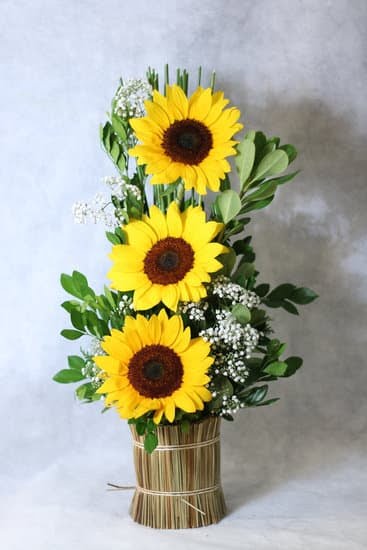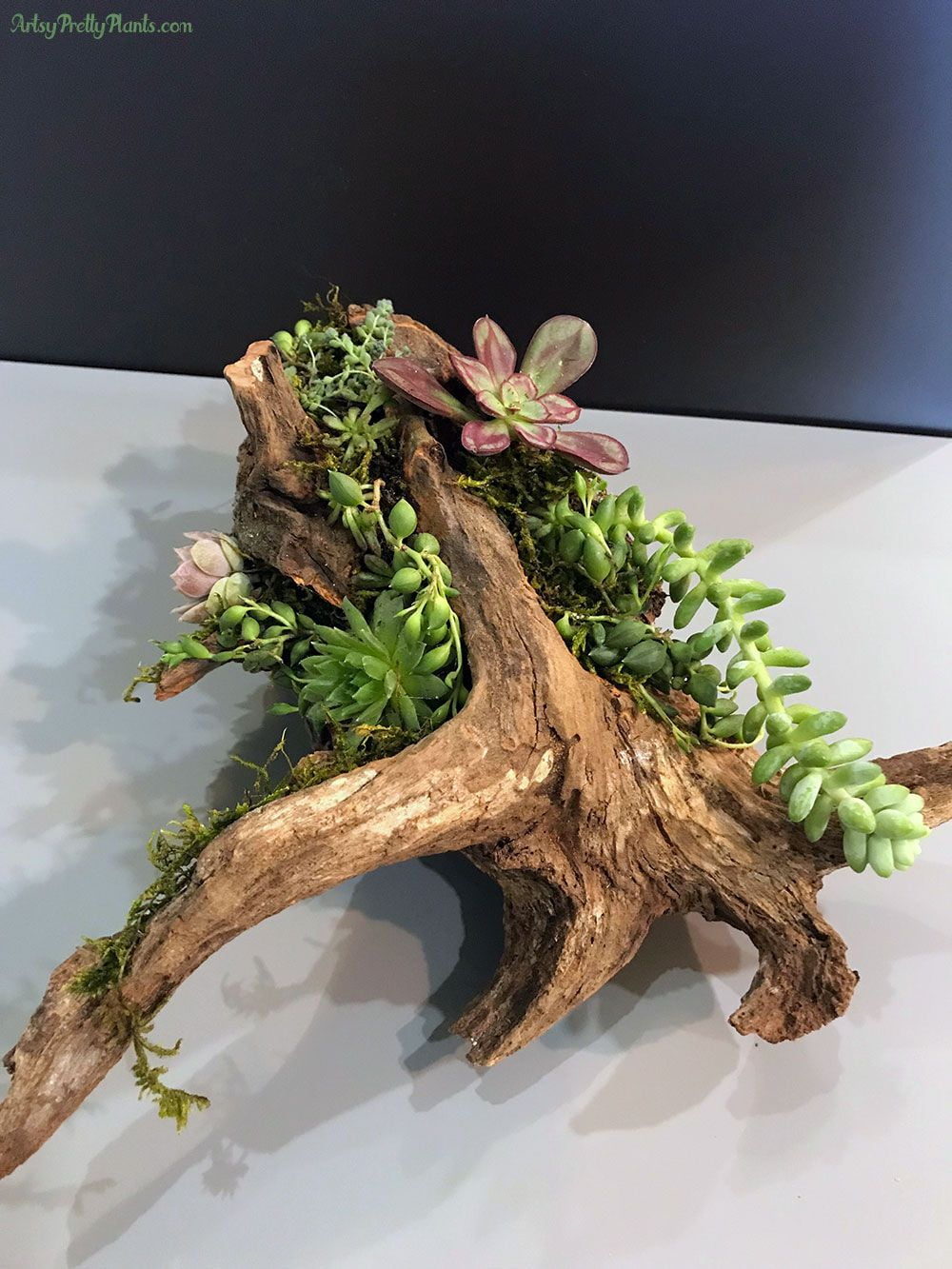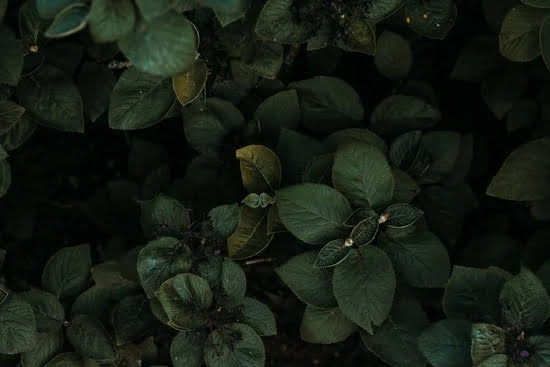
Welcome to the Wonderful World of Gardening for Beginners. Whether you have a small balcony, a backyard, or just a windowsill, gardening can be an incredibly rewarding and fulfilling hobby. Not only does it allow you to connect with nature and create something beautiful, but it also provides numerous health benefits and the opportunity to grow your own delicious food.
In this article, we will guide you through the basics of gardening, from understanding different types of gardens to selecting the perfect location for your plants. We will also provide tips on soil preparation, introduce essential tools that every beginner should have, and help you choose beginner-friendly plant varieties for a thriving garden.
As a newcomer to gardening, there is no need to feel overwhelmed. We will take you step-by-step through planting techniques for both seeds and seedlings and offer advice on watering, fertilizing, and pest control. Additionally, we will introduce eco-friendly practices that promote sustainability in your garden and help troubleshoot common problems such as pests, diseases, and weeds.
So get ready to embrace gardening as a relaxing and rewarding journey. By the end of this article, you will have the knowledge and confidence to nurture your own garden and enjoy the fruits of your labor. Let’s dive in.
Understanding the Basics
Gardening is a vast and diverse world, offering many different avenues for beginners to explore. Understanding the basics and learning about the different types of gardens can help you find your passion and direction in this fulfilling hobby.
Flower Gardens
One of the most popular types of gardens is the flower garden. Flower gardens are perfect for those who want to add beauty and color to their outdoor space. They can be filled with annuals, perennials, or a mix of both. Annuals are plants that complete their life cycle in one year, while perennials come back year after year.
When planning a flower garden, consider factors such as sun exposure, soil type, and water requirements. Some flowering plants thrive in full sun, while others prefer shade or part shade. Choosing plants that are well-suited to your growing conditions will increase your chances of success.
Vegetable Gardens
For those interested in growing their own food, vegetable gardens are a great option. Growing vegetables allows you to have fresh produce at your fingertips and provides a sense of satisfaction knowing that you grew it yourself.
When starting a vegetable garden, it’s important to consider the amount of sunlight your chosen location receives as most vegetables require full sun. Additionally, soil composition is crucial for optimal growth and nutrient uptake by plants. Adding compost or organic matter can improve soil fertility and structure.
Herb Gardens
Herb gardens are another popular choice among beginners due to their practicality and versatility. With an herb garden, you can have an abundance of flavorful herbs right outside your door for use in cooking or making teas and remedies.
Some common herbs that are easy to grow include basil, rosemary, thyme, mint, and parsley. Most herbs thrive in well-draining soil with at least six hours of sunlight daily. Consider planting them near your kitchen for convenient access.
Container Gardens
If you have limited space or lack access to a garden plot, container gardening is an excellent option. Container gardens allow you to grow plants in pots, hanging baskets, or other types of containers that can be placed on a patio, balcony, or windowsill.
When choosing containers for your plants, opt for those with drainage holes to prevent waterlogged roots. Use potting soil specifically formulated for container gardening and ensure the size of the container is appropriate for the plant’s root system.
Understanding the different types of gardens available can help you determine which one aligns best with your interests and resources. Whether you choose a flower garden, vegetable garden, herb garden, or container garden, the key is to start small and gradually expand as you gain experience and confidence in your gardening skills.
Selecting the Perfect Location
When it comes to gardening, selecting the perfect location for your garden is crucial for its success. The right spot can make all the difference in terms of sun exposure, soil quality, and accessibility. Here are some tips to help you find the ideal location for your garden:
- Assess the Sunlight: Most vegetables and flowers require at least six hours of direct sunlight each day. Observe the potential locations in your yard and note how much sun each area receives throughout the day. Pay attention to any obstructions that may cast shade, such as trees or structures. Choose a spot that offers maximum sunlight exposure for optimal plant growth.
- Check Soil Quality: Before deciding on a location, it is essential to assess the quality of your soil. Test the soil’s pH levels using a home testing kit or send a sample to a local extension office for analysis. Additionally, consider its drainage capabilities and texture. Ideally, you want loamy soil that drains well and is rich in organic matter.
- Evaluate Accessibility: Consider the accessibility of your chosen location. You will need easy access to water sources for regular watering purposes. Having nearby storage space for tools and equipment is also beneficial. Furthermore, having your garden close to your home makes it convenient for daily maintenance and monitoring.
Once you have considered these factors, it’s time to finalize the perfect location for your garden. Remember that gardening is an ongoing learning process; don’t be afraid to experiment with different areas of your yard until you find what works best for you and your plants.
Preparing the Ground
Understanding the Importance of Soil Preparation
Before starting your gardening journey, it is crucial to understand the importance of soil preparation. Healthy soil is the foundation for a thriving garden, as it provides essential nutrients and a proper growing environment for plants. Taking the time to prepare your soil will not only benefit your current plants but also lay the groundwork for future success in gardening.
Testing Your Soil
One of the first steps in preparing your ground is to test your soil. A simple pH testing kit can provide valuable information about the acidity or alkalinity level of your soil. Most plants prefer slightly acidic to neutral soils (pH 6-7). If your soil is too acidic or alkaline, you can adjust its pH levels by adding materials such as lime or sulfur according to the recommendations given by the testing kit.
In addition to pH levels, it is vital to test and evaluate other characteristics of your soil, such as its texture and composition. Sandy soils drain quickly but may require more frequent watering and fertilization, while clay soils tend to retain too much water and may need better drainage. By understanding these properties, you can make informed decisions on how best to condition and improve your soil.
Conditioning Your Soil
Once you have tested your soil and made any necessary adjustments, you can move on to conditioning it. Conditioning involves improving the structure and fertility of the soil by incorporating organic matter into it. Organic matter, such as compost or well-rotted manure, helps improve drainage in clay soils and moisture retention in sandy soils while providing nutrients for plant growth.
To condition your soil effectively, begin by removing any weeds or debris from the area. Then spread a layer of organic matter over the topsoil called mulching-a process that suppresses weeds and conserves moisture in the ground. Next, use a garden fork or tiller to mix the organic matter thoroughly into the soil, breaking up any large clumps and ensuring an even distribution. Finally, rake the area to level it and remove any remaining debris.
Taking the time to properly prepare and condition your soil will provide a strong foundation for your garden and set you up for success in your gardening journey. When you have healthy soil, it becomes easier for plants to establish their roots, access nutrients, and grow vigorously. With a well-prepared ground, you are one step closer to creating a beautiful and productive garden space.
Essential Tools
Gardening requires the use of various tools and equipment to ensure successful cultivation and maintenance of plants. As a beginner, it is important to have a basic understanding of the essential tools needed for your gardening journey. Here are some must-have gardening equipment for beginners:
Garden Gloves
A pair of good-quality garden gloves is essential for protecting your hands from cuts, blisters, and contact with thorny plants or soil-borne diseases. Look for gloves made from sturdy materials that provide both comfort and flexibility. It is recommended to have multiple pairs of garden gloves for different tasks and to switch them out when they become dirty or worn out.
Pruning Shears
Pruning shears, also known as secateurs, are vital for trimming shrubs, pruning dead branches, and shaping plants. They come in different sizes, so choose ones that are suitable for the types of plants you will be working with. Make sure to clean and sharpen your pruning shears regularly to maintain their effectiveness.
Trowel
A trowel is a hand tool used for digging small holes, transplanting seedlings, and breaking up soil. It has a narrow blade with a pointed end that makes it easy to maneuver in tight spaces. Look for a trowel with a comfortable grip handle and stainless steel construction for durability.
Rake
A rake is an essential tool for leveling the soil surface, removing debris such as leaves or grass clippings, and promoting healthy airflow around plants. Choose a rake with flexible tines that can easily glide through soil without causing damage.
Watering Can or Hose
Proper watering is crucial for plant growth and health. Depending on the size of your garden, you may opt for a watering can or invest in a hose with an adjustable spray nozzle. Watering cans are ideal for smaller gardens, while hoses provide convenience and flexibility for larger areas. Whichever option you choose, make sure to water your plants evenly and avoid overwatering.
In addition to these essential tools, other equipment that can be beneficial for beginners include a hand weeder for removing weeds, a wheelbarrow or garden cart for transporting heavy items or soil, a garden fork for loosening compacted soil, and a garden hose reel or storage bin to keep your tools organized. Investing in these basic gardening equipment will set you up for success and make your gardening experience more enjoyable and efficient.
Choosing the Right Plants
When it comes to gardening, choosing the right plants is essential for beginners who want to see their garden thrive. Not all plants are suitable for every garden, so it’s important to select varieties that are beginner-friendly and can adapt well to your specific growing conditions. Here are some plant options that are perfect for those new to gardening:
1. Herbs: Herbs are a great choice for beginners because they are low-maintenance and can be grown in small spaces like pots or herb gardens. Some popular herbs for beginners include basil, mint, rosemary, and parsley. These herbs can be used in cooking and provide a fragrant addition to your garden.
2. Succulents: If you’re looking for plants that require minimal water and care, succulents are the way to go. They come in a variety of shapes and sizes, making them perfect for adding visual interest to your garden or indoor spaces. Examples of beginner-friendly succulents include jade plants, snake plants, and aloe vera.
3. Zinnias: Zinnias are colorful annual flowers that are easy to grow from seed. They come in a wide range of vibrant colors and attract pollinators like butterflies and bees to your garden. Zinnias prefer full sun and well-drained soil, making them an ideal choice for beginner flower gardeners.
4. Tomatoes: Tomatoes are one of the most popular vegetables grown by beginners due to their versatility in cooking and relatively easy cultivation. Choose bush varieties or determinate types as they require less maintenance compared to indeterminate varieties that need staking.
5. Lettuce: Lettuce is another great option for beginner vegetable gardeners as it grows quickly and doesn’t require much space or maintenance. Varieties like leaf lettuce or butterhead lettuce can be sown directly in the garden or in containers, providing a fresh supply of salad greens throughout the growing season.
Remember to consider your local climate and growing conditions when selecting plants for your garden. It’s also helpful to research each plant’s specific requirements, such as sunlight, soil type, and water needs, to ensure you provide the best care for your chosen varieties. By starting with these beginner-friendly plants, you’ll be well on your way to establishing a thriving garden that brings joy and satisfaction.
Planting Techniques
When it comes to gardening, planting seeds and seedlings is a crucial step that can determine the success of your garden. Whether you are starting from scratch with seeds or opting for transplants, following proper planting techniques is essential. Here are step-by-step instructions to ensure your plants get off to a healthy start:
- Prepare the soil: Before planting, make sure the soil is well-prepared and free of debris. Remove any weeds or rocks. Loosen the soil with a garden fork or tiller to improve drainage and allow roots to penetrate easily.
- Read the instructions: Different plants have different requirements when it comes to planting depth and spacing. It’s important to read the seed packet or transplant information carefully to understand the specific needs of each plant.
- Prepare seed holes or transplant spots: Using a handheld trowel, create small holes in the soil according to the recommended depth for your seeds or seedlings. If you’re transplanting, ensure that each hole is large enough to accommodate the plant’s root system without crowding or damaging the roots.
- Planting seeds: Gently place seeds in their respective holes at the recommended depth, typically indicated on the seed packet. Cover them with soil and lightly pat down to ensure good contact between seeds and soil.
- Planting seedlings/transplants: Carefully remove transplants from their containers by gently squeezing or tapping on the bottom of pots. Place them in their designated holes, making sure they sit at ground level without burying too deep or exposing any part of their stems above ground.
- Water thoroughly: After planting, give your plants a good drink of water to help settle them in their new environment and provide moisture for germination (in the case of seeds). Use a gentle spray nozzle or watering can so as not to disturb newly planted seeds or dislodge seedlings.
Remember, every plant has its own optimal planting time and conditions. Be sure to check the planting guidelines for each specific plant variety you are growing. By following these step-by-step planting techniques, you’ll give your seeds and seedlings the best possible start and increase their chances of thriving in your garden.
Nurturing Your Garden
Once you have planted your garden, it is essential to provide proper care to help your plants thrive. In this section, we will discuss watering, fertilizing, and pest control tips that are perfect for beginners.
Watering
Proper watering is crucial for the health and growth of your plants. The key is to find the right balance – not too much water that may drown the plants or too little water that may cause them to wither. Here are some watering tips for beginners:
- Determine the watering needs of different plants: Different types of plants have different water requirements. Some plants prefer moist soil while others need drier conditions. It is important to research and understand the specific needs of each plant in your garden.
- Water at the right time: Water early in the day so that foliage has time to dry before evening, preventing diseases caused by prolonged moisture on leaves.
- Use mulch: Applying a layer of organic mulch around your plants can help retain moisture in the soil and reduce evaporation. Mulch also helps prevent weed growth.
- Check soil moisture regularly: Stick your finger into the top inch of soil to check if it feels dry or evenly moist before watering again.
Fertilizing
Fertilizers provide essential nutrients for plant growth and development. Although there are many types of fertilizers available, beginners should start with organic options as they are generally safer and more environmentally-friendly. Here are some tips on fertilizing your garden:
- Understand fertilizer ratios: Look for three numbers on fertilizer packages such as 10-10-10 or 5-10-These numbers represent percentages of nitrogen (N), phosphorus (P), and potassium (K) respectively – three essential nutrients needed by plants in different amounts.
- Follow the recommended dosage: Too much fertilizer can harm your plants, so carefully follow the package instructions for the appropriate amount to use.
- Apply fertilizers at the right time: Generally, it is best to apply fertilizers during the growing season for optimal plant uptake. However, follow specific recommendations for individual plants as some may have different fertilizing needs.
Pest Control
Keeping pests away from your garden is crucial to maintain healthy plants. Here are some organic pest control tips that beginners can utilize:
- Companion planting: Some plants naturally repel certain pests or attract beneficial insects that can help control pests in your garden. Consider planting marigolds, nasturtiums, or basil alongside susceptible plants.
- Handpicking: Regularly inspect your plants and promptly remove any visible pests by hand.
- Homemade remedies: Make use of natural insect repellents such as garlic spray or neem oil solution that are safe for both plants and the environment.
By following these watering, fertilizing, and pest control tips, you will be on your way to nurturing a beautiful and thriving garden. Remember that gardening is a learning process, and with practice and experimentation, you will develop your own techniques and methods for caring for your plants effectively.
Sustainable Gardening
As a beginner gardener, it’s important to not only enjoy the beauty and harvest of your garden but also contribute to the health of the planet. Sustainable gardening is a valuable practice that incorporates eco-friendly techniques to minimize waste, conserve resources, and create a balanced ecosystem in your garden. By adopting these practices, you can make a positive impact on the environment while still indulging in your new hobby.
One key aspect of sustainable gardening is water conservation. Water is a precious resource and using it efficiently in your garden will not only save water but also reduce your water bill. Consider installing a rainwater harvesting system to collect rainwater for watering plants. Additionally, use mulch around your plants to retain moisture and minimize evaporation. Choosing drought-tolerant plants that are well-suited to your climate will also help reduce water usage.
Another important aspect of sustainable gardening is soil health. Instead of relying on chemical fertilizers, opt for organic compost or natural alternatives such as bone meal, blood meal, or fish emulsion. These natural fertilizers not only improve soil fertility but also avoid harmful runoff into nearby water sources. Additionally, practicing crop rotation can help prevent nutrient depletion in the soil and reduce the risk of diseases and pests.
Integrated pest management (IPM) is another eco-friendly practice to implement in your garden. IPM involves using a combination of biological control methods, such as beneficial insects or birds, along with cultural practices like crop rotation and proper sanitation measures to manage pests effectively. This approach reduces reliance on chemical pesticides that can harm beneficial insects and contaminate the environment.
By embracing sustainable gardening practices from the start, you can create an eco-friendly garden that supports biodiversity, conserves resources, and minimizes harm to the environment. With each step you take towards sustainability in your gardening journey, you contribute positively towards making our planet greener and healthier. So, as a beginner gardener, remember that your new hobby can be not only a source of joy but also a way to promote sustainability in your own backyard.
Troubleshooting Common Garden Problems
One of the inevitable challenges that gardeners, especially beginners, face is dealing with pests, diseases, and weeds. These unwanted visitors can wreak havoc on your plants and hinder their growth and productivity. However, with the right knowledge and strategies, you can effectively troubleshoot these common garden problems.
Pests are a common complaint among gardeners, as they can quickly infest and damage your plants. Some common pests include aphids, slugs, snails, and caterpillars. To address pest issues, it is important to identify the specific pest causing damage to your plants. This will help you choose the appropriate method for control or removal. There are various methods to consider such as natural predators like ladybugs or using homemade organic sprays to deter pests without harming beneficial insects.
Another challenge in gardening is dealing with plant diseases. Fungal infections, bacterial blights, and viral diseases can all affect the health of your plants. To prevent diseases from spreading in your garden, it is crucial to practice good hygiene by regularly cleaning tools and removing diseased plant material. Additionally, proper spacing between plants helps improve air circulation and reduce the risk of disease spread.
Weeds are an unwelcome presence in any garden as they compete with your plants for nutrients and resources. Regular weeding is essential to keep them under control. Mulching around your plants with materials like straw or wood chips can help suppress weed growth by blocking sunlight from reaching weed seeds. Hand-pulling or using gardening tools specifically designed for weed removal are also effective methods for keeping weeds at bay.
In summary, while pests, diseases, and weeds may pose challenges in gardening, knowing how to troubleshoot these common garden problems is essential for maintaining a healthy and thriving garden. By identifying pests accurately and implementing appropriate control measures, practicing good hygiene to prevent disease spread, and employing effective weeding techniques, you can overcome these challenges and enjoy the rewards of a successful garden.
| Garden Problem | Troubleshooting Tips |
|---|---|
| Pests | – Identify the specific pest damaging your plants
|
| Diseases | – Practice good hygiene by cleaning tools and removing diseased plant material
|
| Weeds | – Mulch around plants to suppress weed growth
|
Harvesting and Enjoying the Fruits of Your Labor
Once you have put in the hard work of planting and nurturing your garden, it is time to reap the rewards. Harvesting your crops and enjoying the fruits of your labor is one of the most satisfying aspects of gardening. In this section, we will provide you with some tips to ensure a bountiful garden harvest.
- Timing is Key: Knowing when to harvest your crops is crucial for optimal flavor and texture. Each plant has its own specific harvesting window, so it is important to familiarize yourself with the specific needs of each crop. For example, tomatoes should be harvested when they are fully ripe and firm, while lettuce should be picked when the leaves are young and tender.
- Proper Harvesting Techniques: To ensure that you do not damage or bruise your produce during harvest, use sharp shears or pruners to cut the plants close to the ground. Avoid pulling or yanking on the vegetables as this can cause unnecessary stress on the plant and may result in a lower yield in future harvests.
- Preserve or Enjoy Fresh: Depending on the type of crop you are harvesting, you may choose to either preserve your produce for later use or enjoy them fresh from the garden. Some crops such as tomatoes can be canned or turned into sauces, while others like cucumbers can be pickled for longer shelf life. Leafy greens such as lettuce and spinach are best enjoyed fresh.
| Harvesting Tips | Benefits |
|---|---|
| Know when to harvest specific crops | Optimal flavor and texture |
| Use sharp shears or pruners for harvesting | Avoid damage or bruising |
| Decide whether to preserve or enjoy fresh | Customize storage and consumption |
Remember to harvest your crops regularly to prevent overripening and ensure continued productivity. By following these tips, you can enjoy the bounty of your garden and savor the flavors of your homegrown produce. Gardening is a journey that offers not only beautiful plants but also nourishment for the body and soul. Embrace this rewarding experience and continue to learn and grow as a gardener.
Conclusion
Gardening is not just a hobby, it is a journey that can bring relaxation and rewards to beginners. As you have learned throughout this article, there are various types of gardens to explore and different factors to consider when starting your own garden. From selecting the perfect location and preparing the ground to choosing the right plants and implementing sustainable practices, gardening offers endless possibilities for beginners.
By following the step-by-step instructions provided in this article, you can confidently plant seeds and seedlings, nurture your garden through watering and fertilizing, and effectively deal with common garden problems such as pests, diseases, and weeds. Remember that gardening is a learning process and it may take time before you see the results of your hard work. Therefore, it is essential to be patient and enjoy the journey.
The fruits of your labor will be well worth it. As you harvest your garden’s produce, whether it is fresh vegetables, beautiful flowers, or fragrant herbs, you will feel a sense of pride and joy knowing that they were grown by your own hand. Gardening not only provides food and beauty but also promotes wellness by connecting us with nature and reducing stress.
So embrace gardening as a relaxing and rewarding journey for beginners. Start small if needed, gradually expanding as you gain experience. Seek inspiration from experienced gardeners or join a community gardening group where you can learn from others who share the same passion. Remember that every gardener started as a beginner once, so don’t be afraid to make mistakes or ask for help along the way.
Now go forth with newfound knowledge, put on your gardening gloves, grab your tools, and step into the wonderful world of gardening for beginners.
Frequently Asked Questions
How do I start gardening for beginners?
Starting gardening as a beginner can be an exciting and fulfilling experience. To begin, it’s important to choose the right location for your garden. Look for an area with good sunlight exposure and well-draining soil. Next, decide on the type of garden you want to have – whether it’s a raised bed, container garden, or traditional in-ground plot.
Once you have your location and garden style sorted out, it’s time to prepare the soil by removing weeds and rocks and adding organic matter like compost or aged manure. Then, select the plants that are suitable for your region and climate. Start with easy-to-grow varieties such as herbs, salad greens, and radishes, which are forgiving for beginners. Finally, make sure to water your plants regularly, provide support when needed (like trellises for climbing plants), and keep an eye out for pests or diseases that might affect your garden.
What are the 4 things to remember when planting a garden?
When planting a garden, there are four key factors that should be kept in mind: sunlight, spacing, watering, and fertilizing. First is sunlight – most plants require at least six hours of direct sunlight per day to grow properly. Ensure that you choose the right spot in your garden which receives adequate sunlight based on the needs of your plants. Second is spacing – different vegetables have various spacing requirements. Overcrowding can lead to poor growth or increased susceptibility to diseases.
Research the recommended spacing for each plant before planting them in your garden beds or containers. Third is watering – proper hydration is essential for healthy plant growth but avoid overwatering as it can cause root rot or other issues. Regularly water your plants based on their specific needs; some may require more frequent watering than others depending on their characteristics. Lastly is fertilizing – enriching the soil with nutrients promotes robust plant growth. Consider using organic fertilizers or compost to provide a balanced mix of nutrients without harming beneficial organisms in the soil.
What are the easiest vegetables to grow for first time gardeners?
For first-time gardeners looking for easy-to-grow vegetables, there are several options that can help build confidence and yield successful results. Leafy greens such as lettuce, spinach, and kale are excellent choices as they often germinate quickly and tolerate various growing conditions. Radishes are another great option since they develop rapidly and can be harvested in as little as three to four weeks. Additionally, herbs like parsley, basil, and chives are relatively low maintenance and can add flavor to your dishes while enhancing biodiversity in your garden.
Cherry tomatoes are also a popular choice among beginners due to their high productivity and compact size. They thrive in containers or hanging baskets, making them suitable for those with limited garden space. By starting with these beginner-friendly vegetables, novice gardeners can gain valuable experience while enjoying the satisfaction of a successful harvest.




